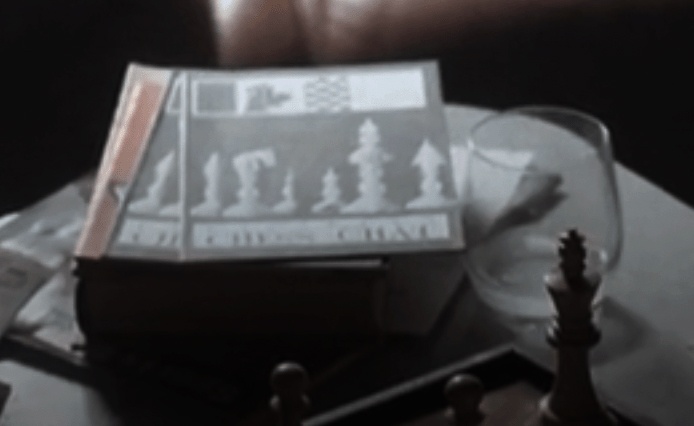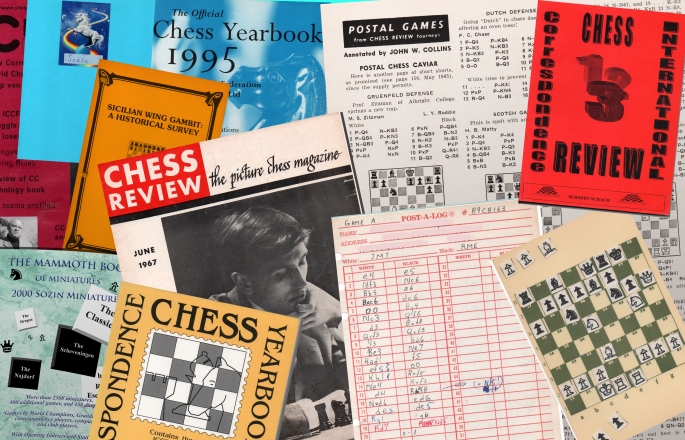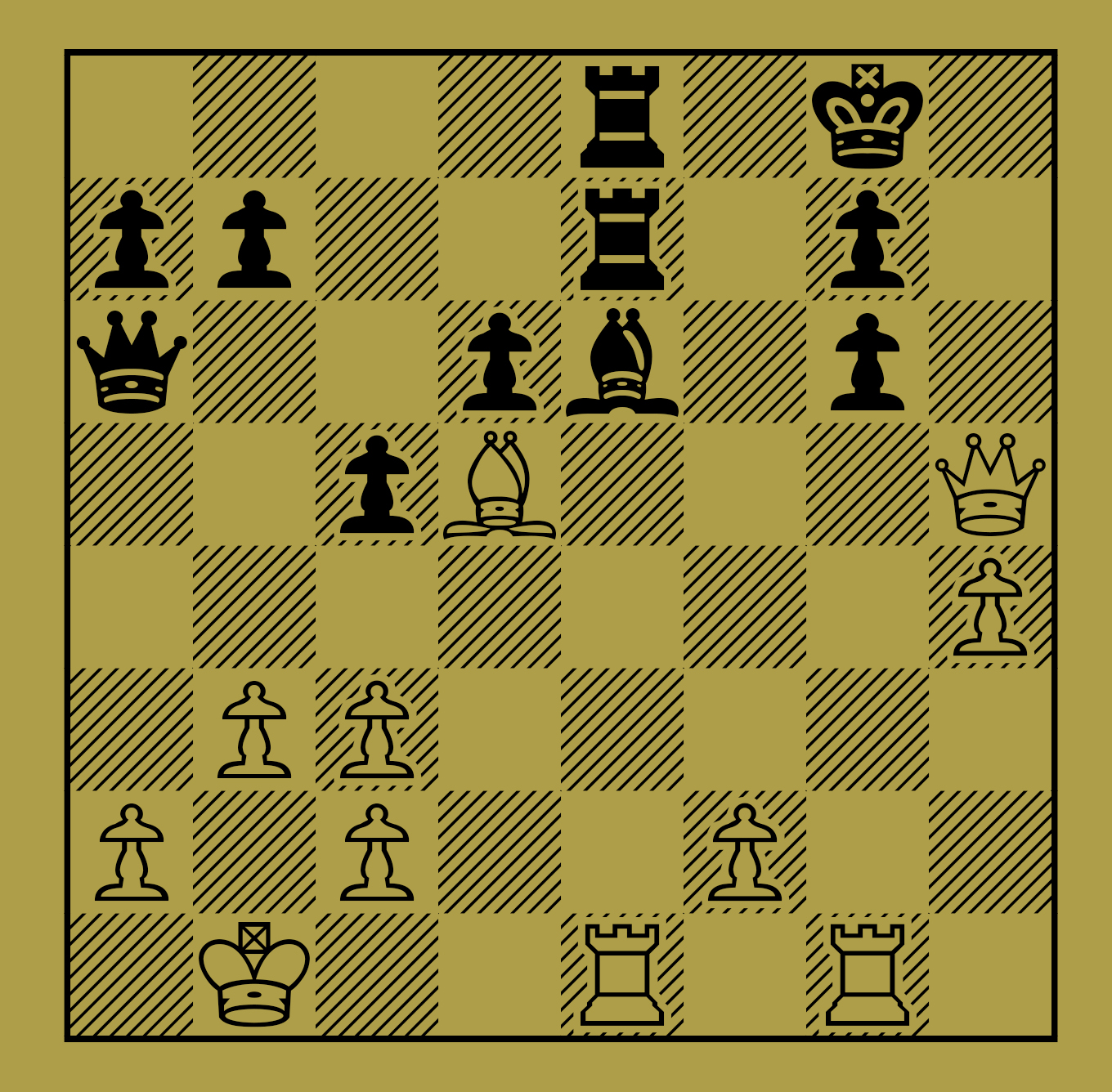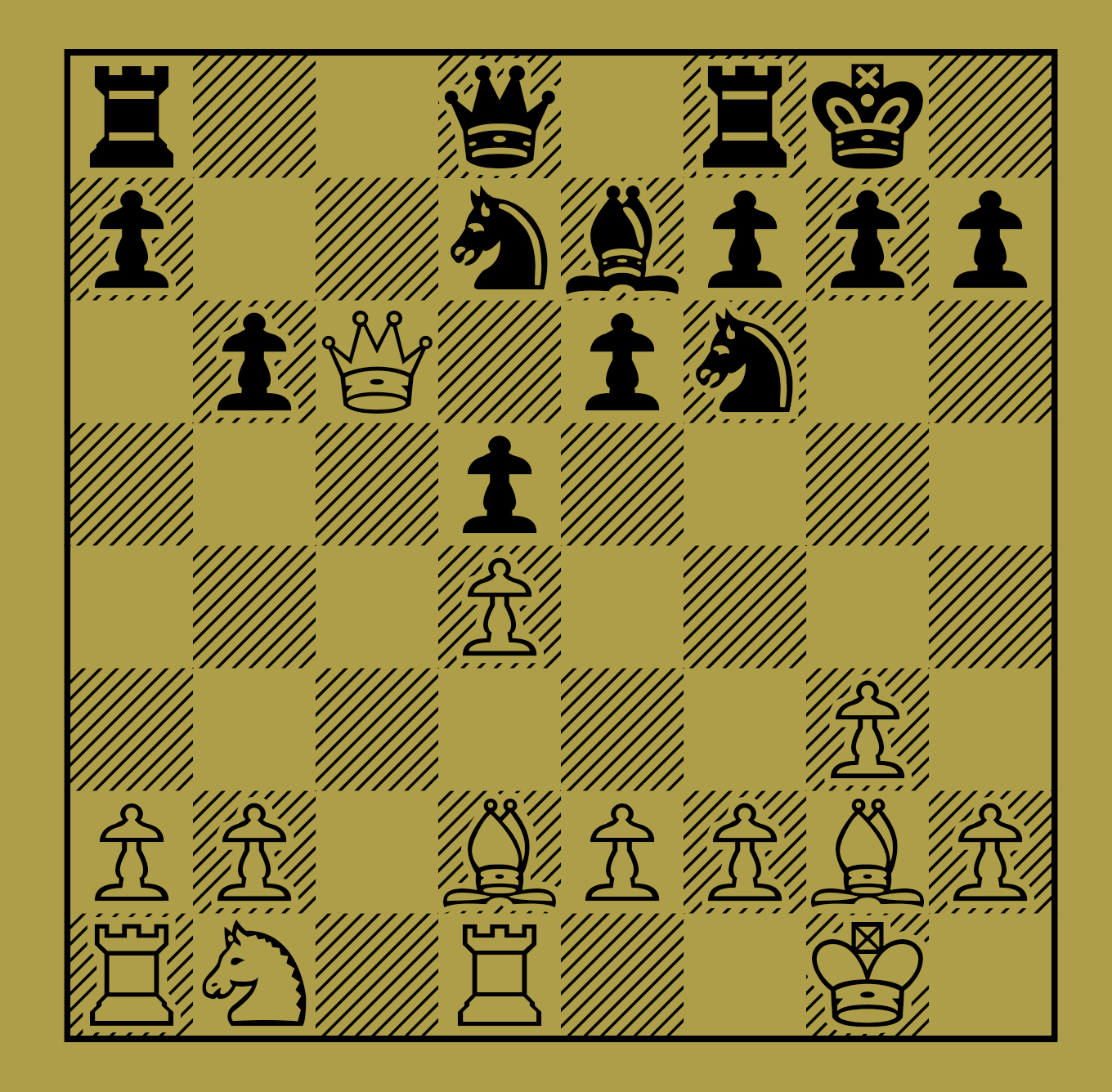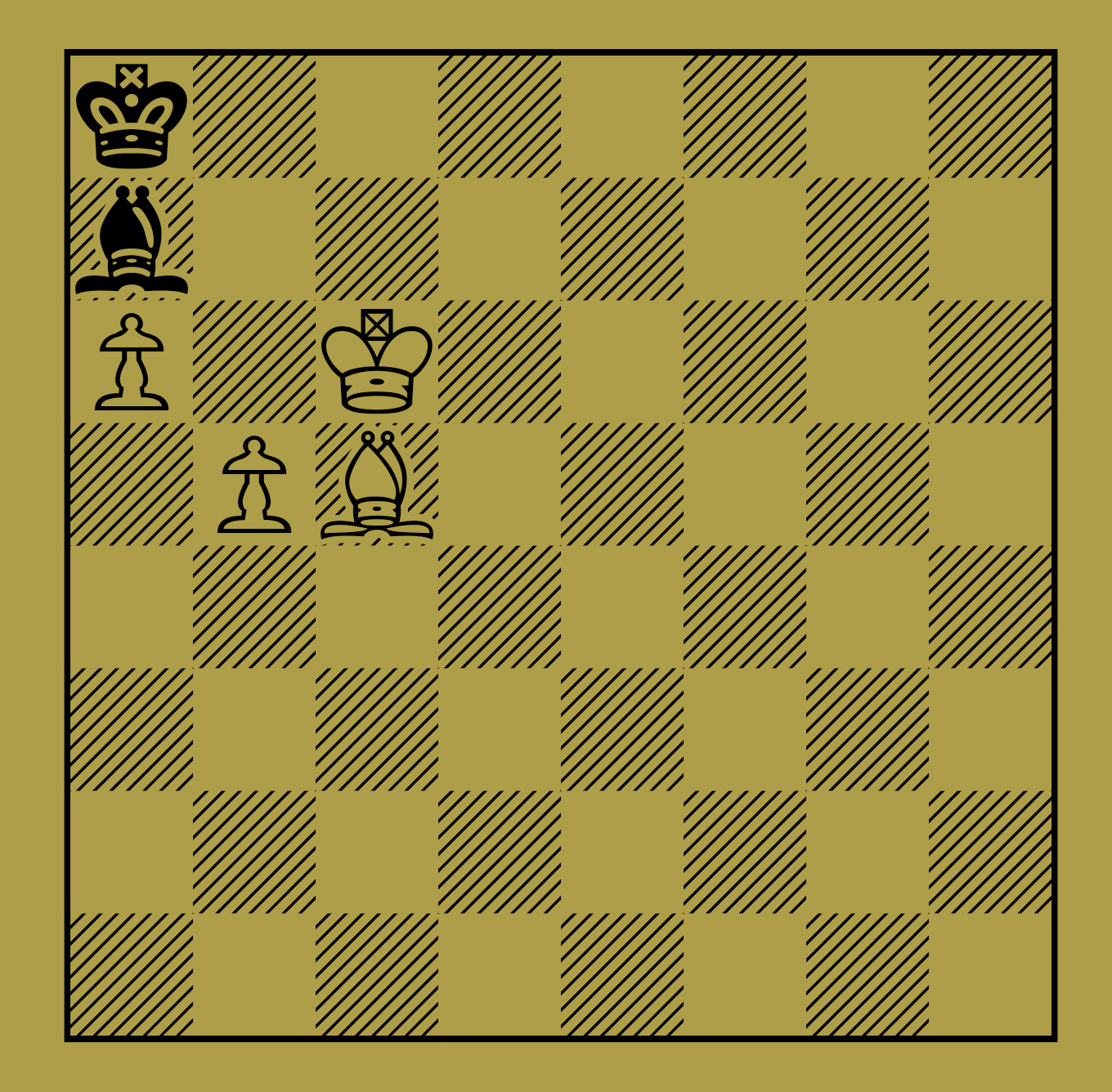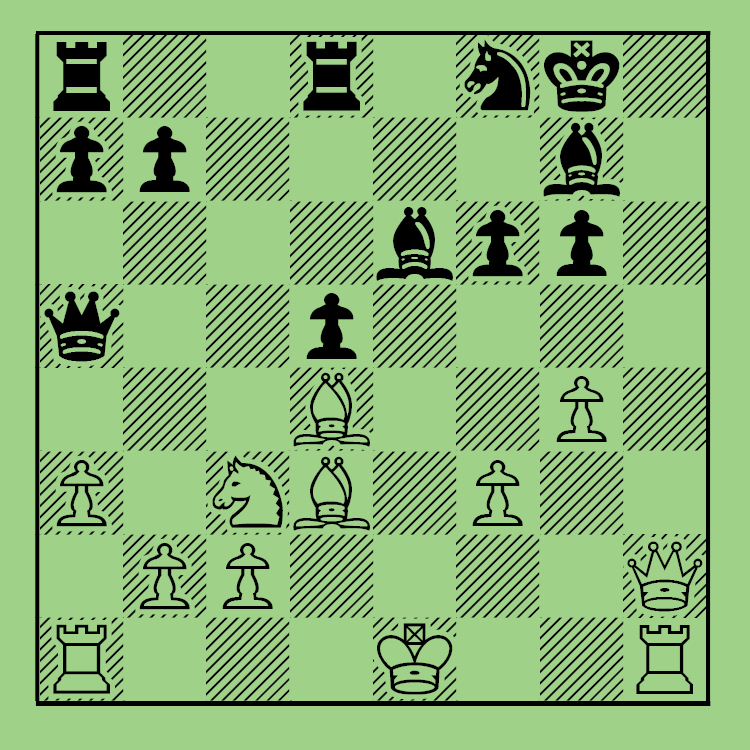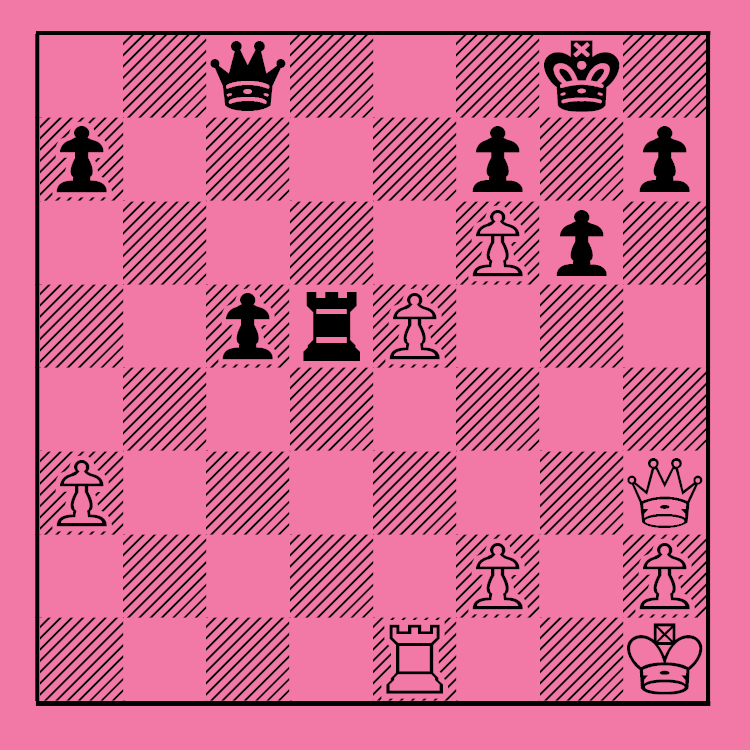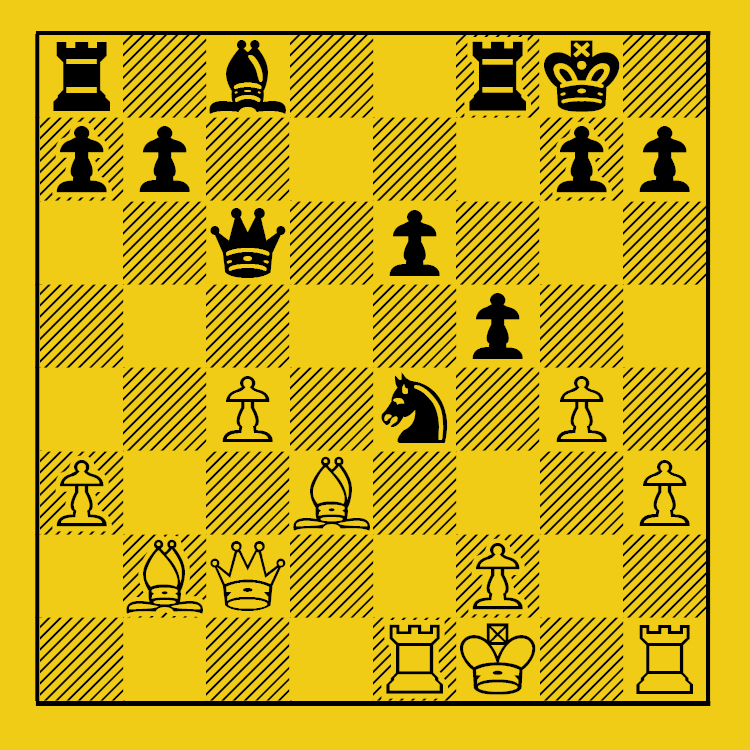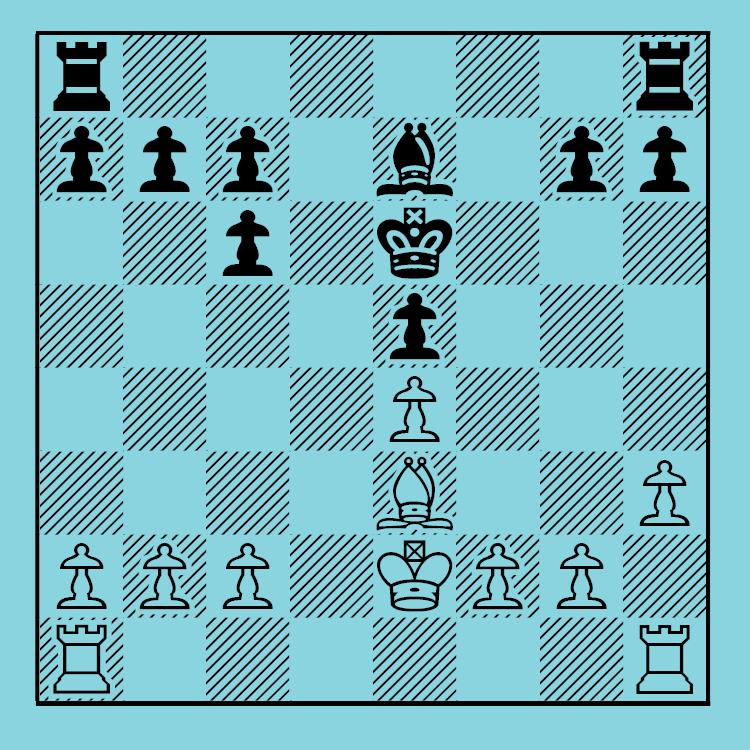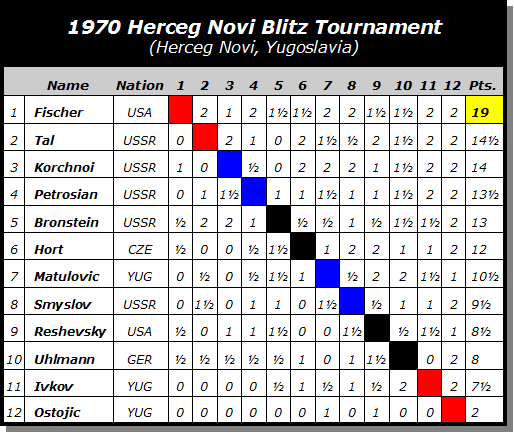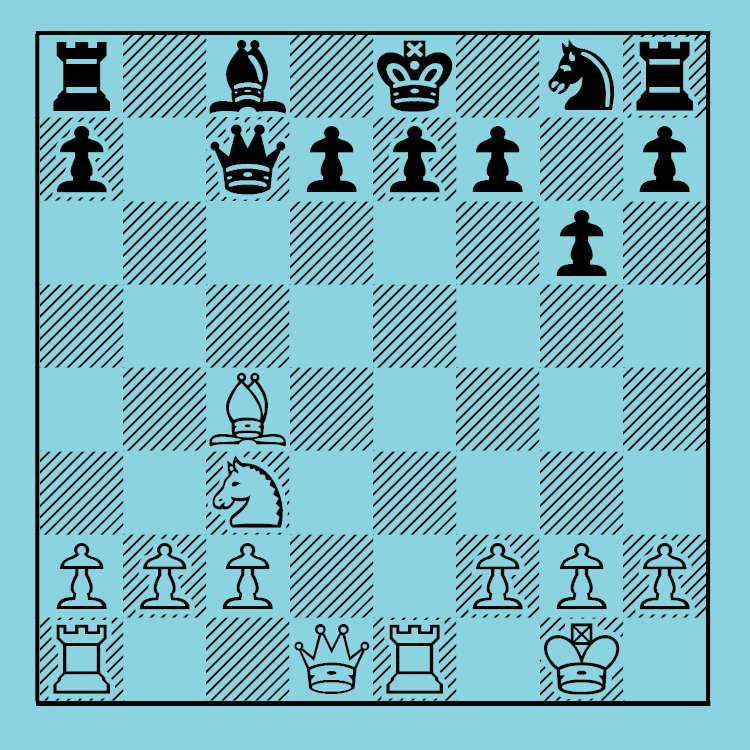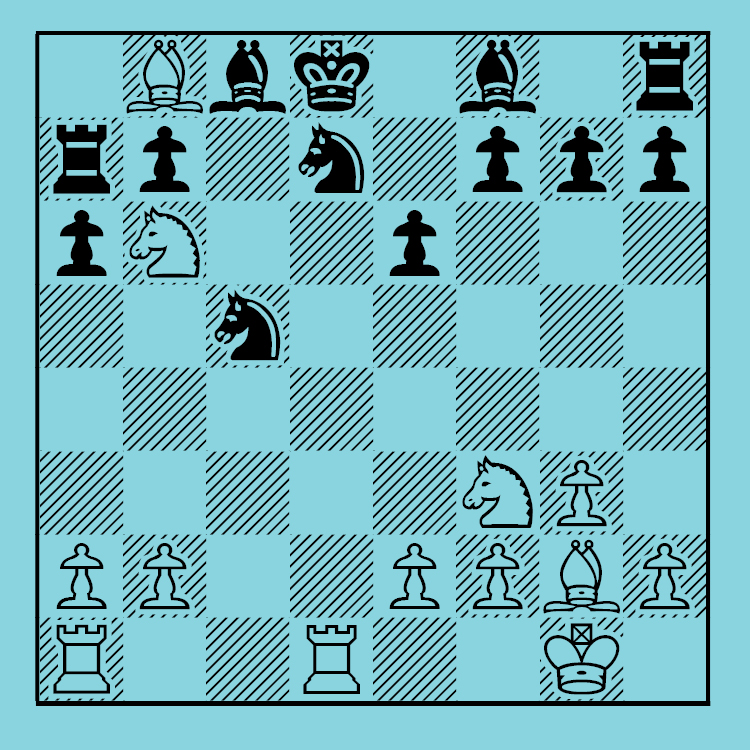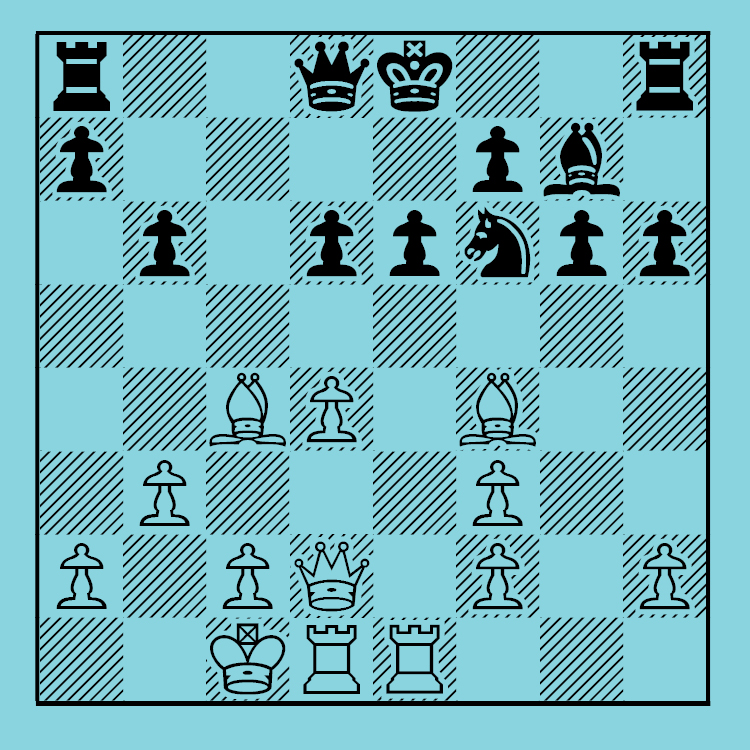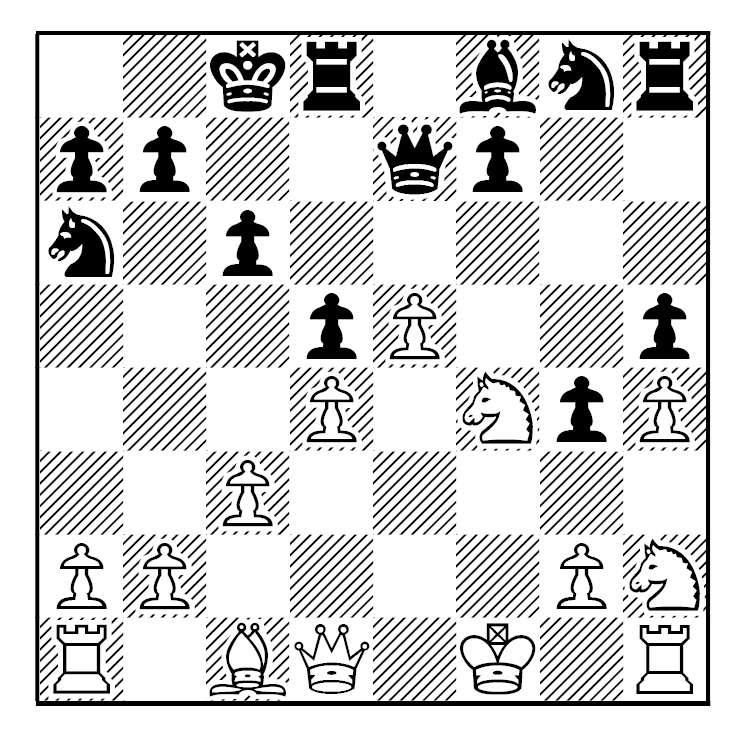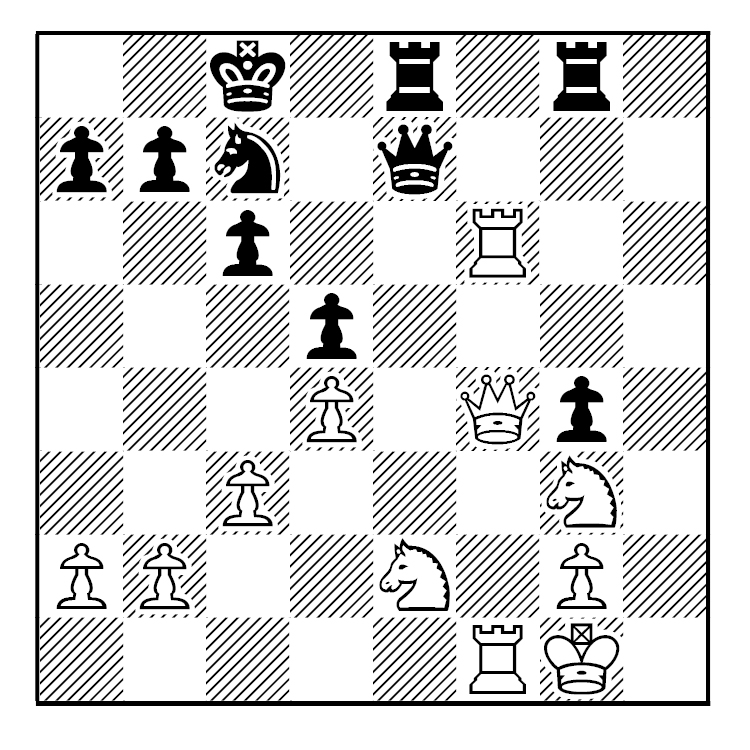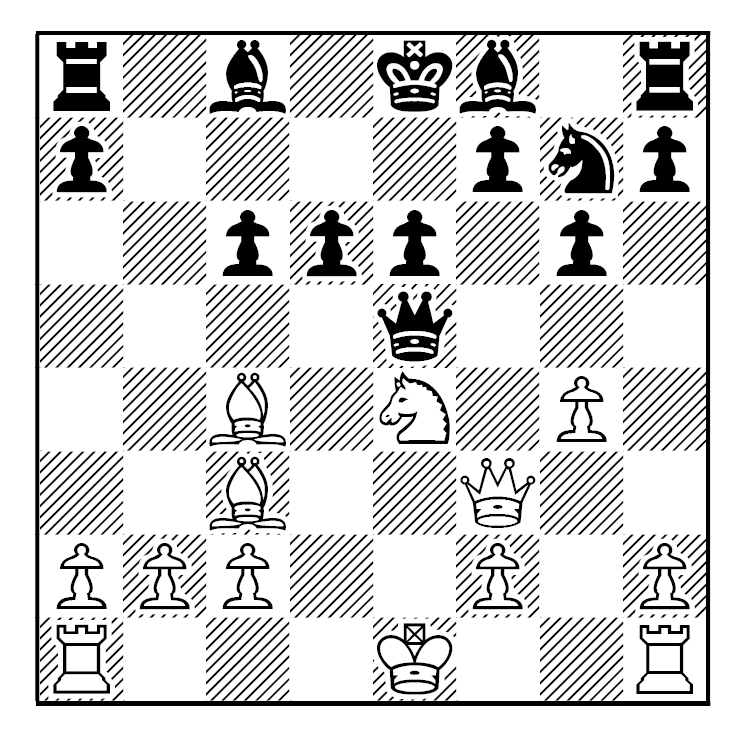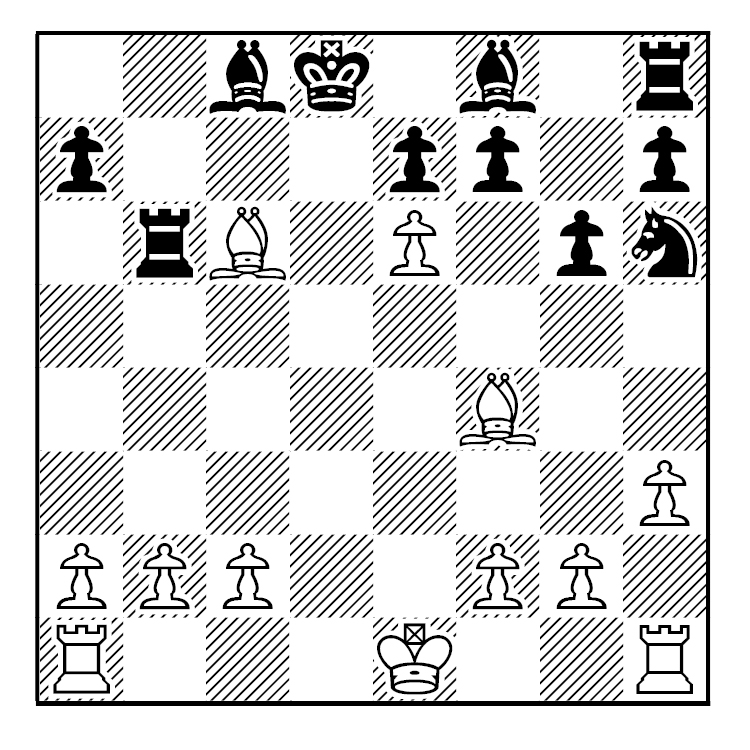
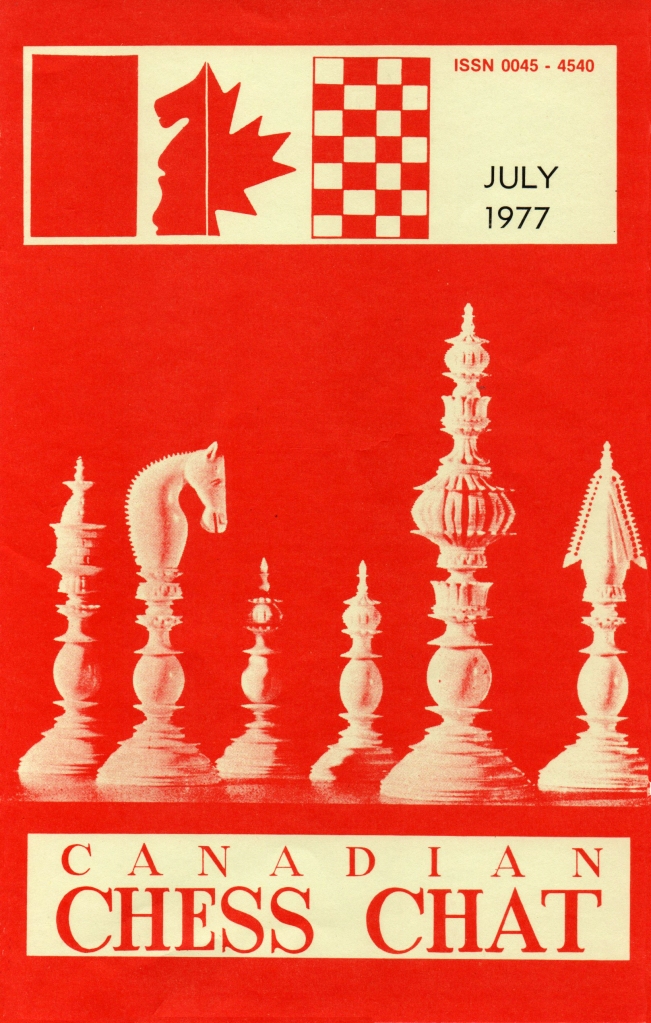
Last week I was pleasantly surprised. I had ordered set of Canadian Chess Chat magazines from the 1977. What made it so fun to read?
First, the games were printed in algebraic notation (AN), years before Chess Life did. The annotations were concise and clear and the games contained enough diagrams to assist the reader with his enjoyment. Our northern neighbors did a good job with magazine.
If I am allowed note one minor gripe, it is that some of the notes seem to have translated from another language, most probably French. There are naturally some glitches and mixed-up of tenses. But they are fun to read!
The publication, Canadian Chess Chat, was published from 1974 to about 1992.
Here are some games from the magazine.
~~~~~~~~~~~~~~~~~~~~~~~~~~~~~~~~
Gabor Kadas-IM Enrico Paoli
Agard, Hungary Sept. 1976
[“Selected Games”, Canadian Chess Chat, March 1977]
1.e4 c5 2.b4 cxb4 3.d4 d5 4.e5 e6?! (4…Nc6 5.a3 Bf5 or 5.Ne2 Bf5 6.Nf4 e6 looks better for Black.) 5.a3 Nc6 6.axb4 Bxb4+ 7.c3 Be7?! (7…Bf8 might be better.) 8.Bd3 h5 9.g4 hxg4 10.Qxg4 g6 11.Na3 Bxa3 12.Bxa3 Qh4 13.Qe2 Nge7 14.Nf3 Qh5 15.h4 Nf5 16.Kd2 Qg4 17.Rag1 Qf4+ 18.Kd1 (Of course, not 18.Kc2?? Qxf3 19.Qxf3 Ncxd4+.) 18…Qh6 19.Ng5 Bd7 20.Qb2 b6 21.Rg4 Qg7 22.c4 dxc4 23.Bxc4 O-O-O 24.Ke2 Kb7 25.Ra1 Bc8 (On 25…Rxh4 26.Rxh4 Nxh4 27.Bc5! and White’s attack comes through. Black tries to turn against the weak d-pawn.) 26.Nf3 Rd7 27.Bc5 Rhd8

28.d5!! (An excellent move which decides the game.) 28…Nb8 (28…exd5 29.Bxd5! Rxd5 30.Rxa7+ Kxa7 31.Qxb6+ Ka8 32.Ra4+ leads to mate.) 29.Rxa7+!! 1-0 (29…Kxa7 30.Qxb6+ Ka8 31.Bd3 +-)
K. Monro-G. Zerkowitz
Vancouver Island Open
Canada, 1977
[Canadian Chess Chat, May 1977]
1.e4 e6 2.d4 d5 3.Nd2 Nc6 4.c3 dxe4 5.Nxe4 Nf6 6.Nxf6+ Qxf6 7.Nf3 h6 8.Bd3 Bd7 9.Be3 Bd6 10.Nd2 e5 11.d5 Nd8 12.c4 Qe7 13.Qc2 Bc5 14.O-O Bxe3 15.fxe3 O-O 16.Rf2 Qg5 17.Qc3 f6 18.Raf1 Nf7 19.Ne4 Qh4 20.Rxf6 gxf6 21.Nxf6+ Kg7 22.Nxd7 Rfe8 23.Nf6 Re7 24.Ne4 Rae8 25.Ng3 Qg5 26.Rf3 Kh8 27.Ne4 Qg7 28.Rg3 Ng5 29.Qb4 Rg8? 30.Nxg5! 1-0
GM Efim Geller-Andrew Whiteley
European Team Ch.
Moscow, Apr. 1977
[“European Team Championship”, Canadian Chess Chat, June 1977]
1.d4 d5 2.c4 c6 3.Nf3 Nf6 4.Nc3 e6 5.e3 Nbd7 6.Bd3 dxc4 7.Bxc4 b5 8.Bb3 b4 9.Ne2 Bb7 10.O-O c5 11.Nf4 cxd4? (This move which opens the center, the e-file, is absolutely wrong. Better was 11…Nb6) 12.exd4 Nb6 13.Ng5 Bd5 14.Nxd5 Nfxd5 15.Ba4+ Nd7 16.Qh5 Qe7 17.Re1 g6 18.Qf3 N5b6 (Threatened Nxf7 and Bc6. Now Geller finishes the “job” in a few more moves.) 19.d5 Nxd5 20.Nxf7 Qxf7 21.Qxd5 O-O-O 22.Qa8+ 1-0
GM Velimirović-GM Romanishin (2595)
Keres Memorial
Tallinn, 1977
[“Keres Memorial in Tallinn”, Canadian Chess Chat, July 1977]
1.e4 e6 2.d4 d5 3.Nc3 Be7 4.e5 b6 5.g4! Ba6 6.Bxa6 Nxa6 7.f4 h5!? 8.gxh5 Bh4+?! (Better was 8…Bb4 9.Nf3 Rxh5 10.Ng5 g6.) 9.Kf1 Ne7 10.Qe2 Nb8 11.Nd1 Nbc6 12.c3 Qd7 (Better was 12…Nf5 13.Ne3 Nce7.) 13.Ne3 g6 (There was no other choice was White threatens Nf3. Now, on the opening f- and h-files Black gets counterplay.) 14.hxg6 fxg6 15.Nf3 O-O-O 16.Rg1! Rdf8 17.Rg4 g5 18.Ng2 Nf5 19.Kg1? (Misjudges the position! The h-file is more dangerous! 19.fxg5 was the right move, for ex.: 19…Qh7 20.Bf4, or 19…Nce7 20.Kg1 Ng6 21.Bf4 Qh7 22.Rf1 and after exchanges on h4 White will have the advantage) 19…Qh7 20.fxg5
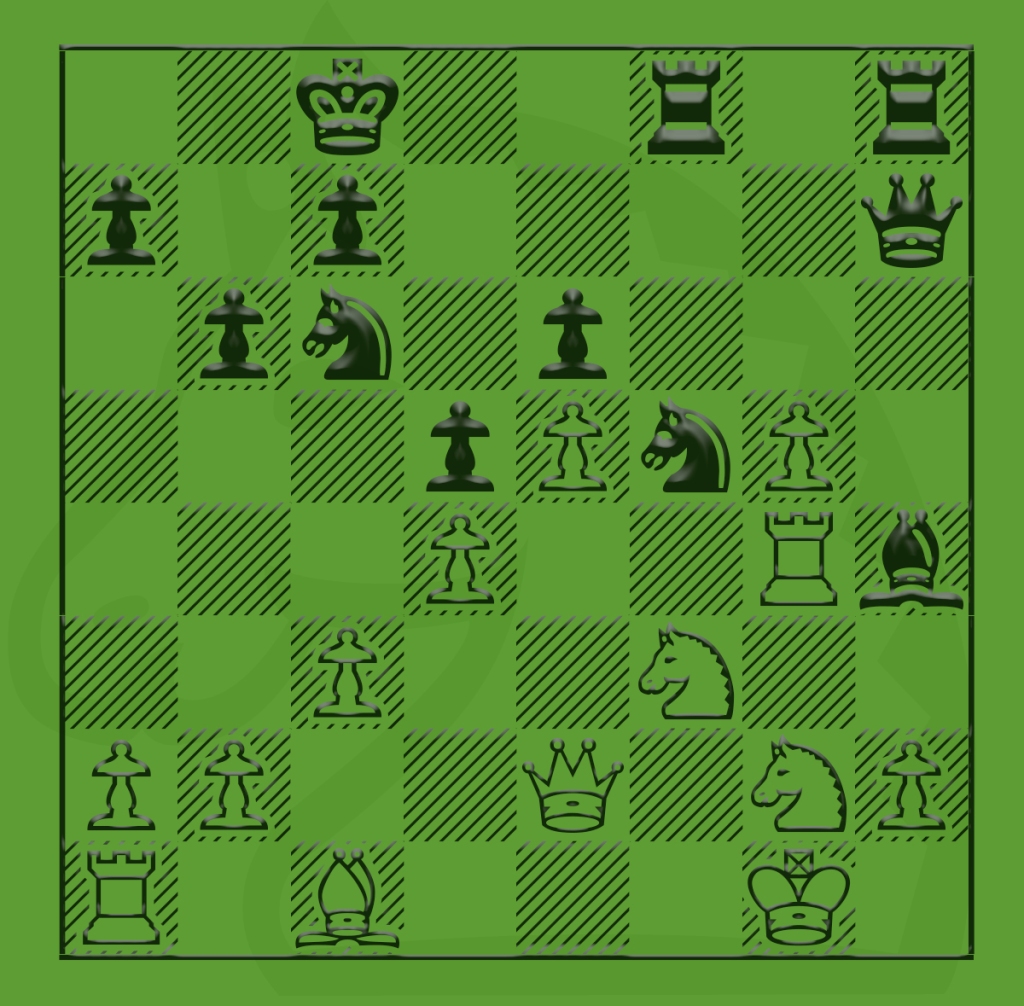
20…Bg3!! 21.Bf4 (If 21.hxg3 the following nice ending is possible: Nfxd4 22.cxd4 Qh1+ 23.Kf2 Rh2 24.Qa6+ Kb8 25.Ke3 Rxf3+ 26.Kxf3 Qxg2+ 27.Ke3 Qf2+ etc.) 21…Qh5! 22.Rxg3 Nxg3 23.Bxg3 Rxf3 24.Re1 Rxg3! 25.hxg3 Qh2+ 0-1 (If 26.Kf2 Rf8+ 27.Ke3 Qxg3+ 28.Kd2 Rf2 wins the queen.)
Alexander Zakharov-GM Anatoly Karpov
USSR Ch.
Moscow Dec 13 1976
[“Games from the 44th USSR Championship”, Canadian Chess Chat, Sept. 1977]
1.d4 Nf6 2.c4 e6 3.Nc3 Bb4 4.a3 Bxc3+ 5.bxc3 c5 6.f3 d6 7.e4 Nc6 8.Ne2 b6 9.Ng3 O-O 10.d5 Na5 11.Bd3 Ba6 12.Qe2 Nd7! 13.f4 exd5 14.cxd5 Bxd3 15.Qxd3 c4 (Otherwise White will play c3-c4. And the square c5 will give a good place for the knight.) 16.Qf3 Nb3 17.Rb1 Re8 18.O-O Ndc5 19.Be3 Nxe4 20.Nxe4 Qe7 21.Nd2 (White’s only chance is in exchanges.) 21…Qxe3+ 22.Qxe3 Rxe3 23.Nxc4 Rxc3 24.Nxd6 Nd2 25.Rbc1 Rd3 26.Rfd1 Rxd5 27.Ne4 Nb3 28.Rxd5 Nxc1 29.Kf2 Nb3 30.Rd7 f5 31.Nd6 Nc5 (Arrives in time, otherwise no chances for winning the game.) 32.Re7 g6 33.Nf7 Kf8 34.Rc7 Ne6 35.Rb7 Re8 36.Nd6? (36.Ng5! gives better chances for a draw in the rook endgame) 36…Re7 37.Rb8+ Kg7 38.g3 Nd4 39.Ne8+ Kf7 40.Nd6+ Ke6 41.Nc4 Kd5 0-1
GM Smyslov-Grigorian
USSR Ch., 1977
[“Games from the 44th USSR Championship”, Canadian Chess Chat, Sept. 1977]
1.e4 c5 2.Nf3 d6 3.d4 cxd4 4.Nxd4 Nf6 5.Nc3 a6 6.Be2 e6 7.O-O Qc7 8.f4 Nbd7 9.a4 b6 10.Bf3 Bb7 11.Qe2 e5!? 12.Nd5! Nxd5 13.exd5 g6! 14.Nc6 Bg7 15.fxe5 (Coming into consideration 15.c4 O-O 16.f5 Rfe8 17.Be4 Rac8 18.f6 Bf8 19.Ra3 and Rh3 with a serious king-side attack.) 15…Nxe5 16.Nxe5 Bxe5 (If 16…dxe5 17.d6 Qd7 18.Bh6!) 17.Bh6 f6! 18.c4 Kf7 19.Bg4 Bc8 20.Bxc8 Raxc8?? (20…Qxc8 was necessary, on which Smyslov planned 21.Be3 Re8 22.Qd3!) 21.Rxf6+!! (And the game suddenly decided due to the unprotected king.) 21…Kxf6 22.Qg4 Qc5+ 23.Kh1 Ke7 24.Bg5+! 1-0
Obviously I am not the only one who enjoyed this magazine. If you watched The Queen’s Gambit you may have noticed this “Easter egg” that was sitting on a table.
